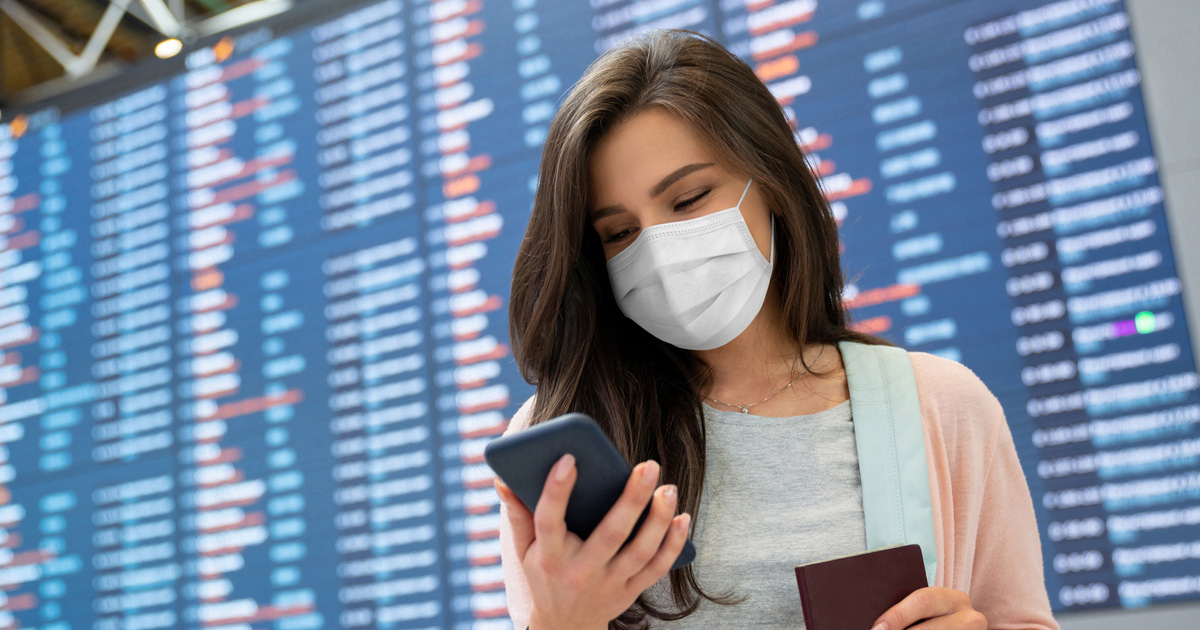
For many, the arrival of three COVID-19 vaccines represents the light at the end of a very long tunnel. Americans have gotten used to doing what’s necessary to keep themselves safe—and we are starting to feel more confident taking steps toward the pleasures and opportunities that once defined “normal” life. Chief among these, and for good reason, is travel. Whether it’s for business, pleasure, reuniting with friends, or simply getting away, travel embodies ultimate freedom from a pandemic that has had us “locked down” for more than a year.
As airlines worked quickly to help ensure the safety of their crews and passengers during the height of the pandemic, they also prepared for a time when air travel demand would once again start to rise. Not only have airlines been prioritizing health and safety, but they’ve also recognized the importance of empowering travelers with options, tools, and technology that promote convenience and accountability. That is, the easier they can make it for passengers to “follow the rules” and come to the airport prepared, the more successful they will be in providing every passenger with a safe, comfortable experience—from the moment they pull into the “arrivals” lane until they depart the airport at their destination. Consequently, some great tools and options exist for air travelers this spring and summer. If you’re considering flying or are already making plans, here are a few key points for you to know.
The requirements. If you’re traveling internationally, you need to be tested—and show negative results—no more than three days before entering the U.S. (or present documentation you have recovered from COVID-19). You must also present an attestation form confirming the information you provide is true. Lastly, you most likely will have to undergo a contactless temperature check before boarding and be required to wear a face covering.
Acceptable tests. For air travel into the U.S., according to the CDC, you must have a viral test—such as those available from vybe. Many airlines have expanded the types of tests they consider to be acceptable. Depending on the airline you fly, you may see the list of acceptable test names including molecular, nucleic acid amplification (NAAT), RT-PCR, LAMP, antigen, or SARS antigen—all of which fall into the category vybe refers to as a PCR test. In addition, rapid tests can be used, provided they are a viral test deemed acceptable by the CDC for air travel.
Entering another country. The first step for international travel is making sure your destination country hasn’t placed a ban on U.S. citizens. If entry is permitted, travelers need to be aware of other requirements, such as presenting a variety of testing and other documentation as well as on-site health checks. A good place to start planning and preparing is the U.S. Department of State’s website, which provides comprehensive information for each country.
Right now, COVID-19 vaccination as it pertains to air travel comes with multiple question marks. Will airlines require passengers to be vaccinated? Perhaps. Could countries require a person to be vaccinated to enter? Possibly. Will airlines offer “all vaccinated” flight options? Maybe. The one thing we can be sure of right now is that getting the COVID-19 vaccine is not an “immunity pass.” Vaccinated or not, at least for the time being, everyone traveling on a plane must meet testing requirements. Moreover, wearing face coverings, practicing social distancing, and keeping your hands and surfaces sanitized remain major necessities for stopping the spread of, and severe illness from, COVID-19.
Airlines and tech developers want to see travel open up and help facilitate society’s return to normal. But they get it—meeting the requirements for doing so, and being safe in the process, is involved. Many airlines have created user-friendly “one-stop COVID centers” on their website, offering online tools that spell out what you need to do. They also connect you with forms and testing sites near you, and provide a place for you to upload and easily retrieve your required “digital paperwork.” There are also several variations of “vaccine passport” apps available that allow travelers to store and organize their necessary COVID travel information, including vaccine and testing documentation, attestation forms, and other health waivers. Some countries/airlines are even starting to accept these vaccine passports as a means of providing what is needed to meet travel requirements.
In conclusion, be optimistic about getting back to more normal times. If you’re traveling internationally—and in some cases, even to another U.S. state—remember that knowledge is a powerful thing! Visit your airline’s website to prepare yourself. Take advantage of COVID tools, read up on the requirements of your destination country and count on trusted providers such as vybe that are here to also help you navigate the testing journey.
Find our COVID-19 testing FAQs here and learn more about options available from all vybe locations.
FIND YOUR VYBE